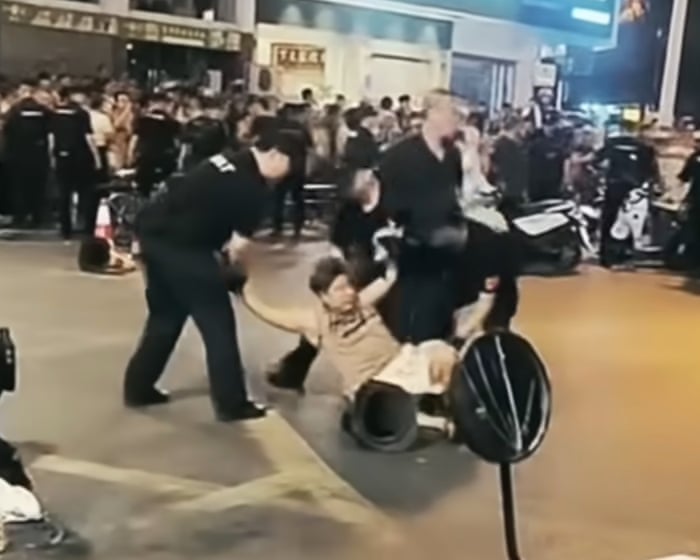What began as a typical case of teenage bullying quickly spiraled into something much larger in the small Chinese city of Jiangyou. On August 2, a video surfaced online showing several teenage girls assaulting and taunting a 14-year-old girl in an abandoned building. The attack, which occurred on July 22, left the victim with minor injuries to her scalp and knees, according to local police.
The video spread rapidly through the community, sparking outrage that eventually erupted into large-scale street protests. Demonstrators clashed violently with police, while authorities worked to contain information about the unrest.
Why did hundreds—possibly up to 1,000 people—flood Jiangyou’s streets that Monday evening? The answer seems to stem from deep-seated frustrations: years of perceived mishandling of bullying cases, distrust of local officials, and anger over heavy-handed police tactics against dissent.
One verified protest video captured chants of “Give us back democracy, reject bullying, serve the people,” alongside renditions of China’s national anthem. Analysts suggest the democracy calls likely referred to local governance rather than national political change.
Other footage showed violent confrontations—police dragging protesters away, officers restraining a man who stood up for an elderly woman, and riot police striking someone pinned to the ground. Jiangyou police didn’t respond to requests for comment.
Earlier that day, authorities had announced the arrest of three suspects (aged 13-15), with the two older girls sent to reform schools. But this failed to calm public anger. The victim’s parents knelt before local officials begging for justice, drawing crowds that quickly grew.
By evening, hundreds surrounded government buildings, with witnesses estimating nearly 1,000 participants. Protesters reportedly grew angrier upon hearing rumors that one assailant had been seen playing billiards instead of being in custody. Witnesses described police using batons and making arrests when barricades came down around 11:30 PM.
School bullying remains a volatile issue in China, where many believe authorities don’t adequately protect students. Similar protests erupted in Henan province last year, reflecting widespread public frustration with the system’s handling of such cases.After the death of a 14-year-old boy, his school claimed the cause was suicide, but his parents and local residents suspected foul play.
In Jiangyou, the intensity of public anger may stem from a broader distrust of authorities, according to Slaten. “There’s a lack of faith in how local officials handle such cases,” he said. “People feel there’s widespread injustice, and they’re outraged by how the school and police managed this situation.”
A social media video from the protests showed people being dragged away by police. One witness said the demonstrations grew because many believed the bullies involved faced little consequences.
“As protests escalate and people demand a different approach, authorities crack down, which only fuels more anger toward the government,” Slaten added. He noted that this pattern—where a specific grievance sparks wider unrest against local officials—is common in China.
Censorship Takes Over
By Tuesday, authorities shifted focus to controlling the narrative. The hashtag “Jiangyou” briefly trended on Weibo, but posts and videos were quickly removed, replaced by official accounts of events.
State media reported that two individuals, surnamed Ding and Yang, were punished for spreading “false rumors” about the incident.
The crackdown extended offline. A shop worker near the local government building told the Guardian she couldn’t discuss the incident, saying, “The police have already warned us not to talk about it.”
Additional research by Jason Tzu Kuan Lu and Lillian Yang




